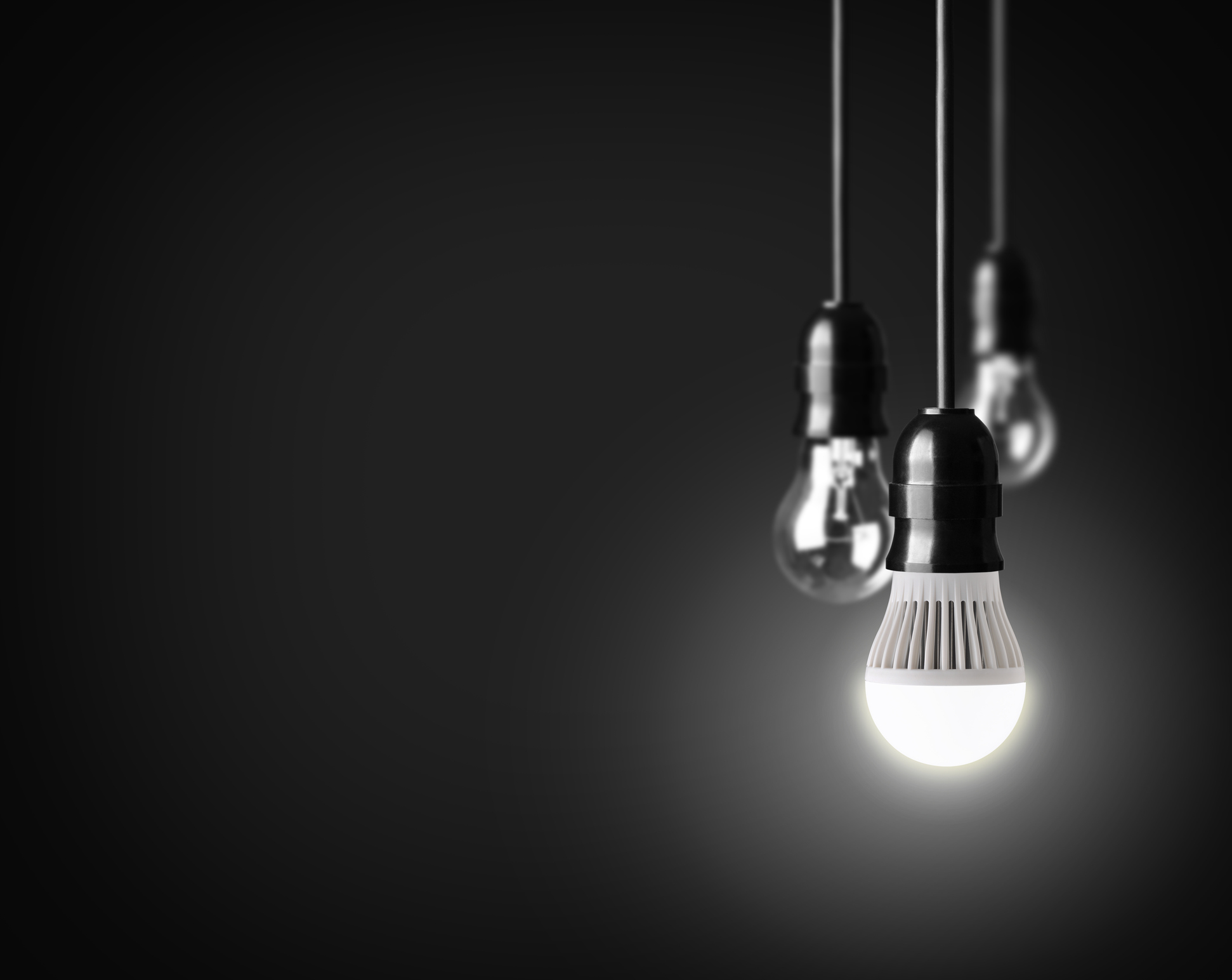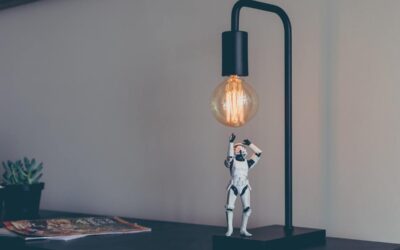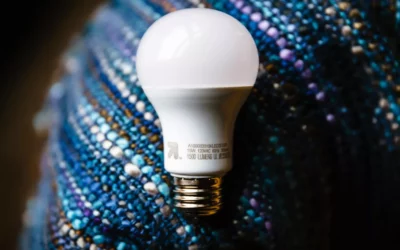Incandescent lights and LED lights are popular choices for household lighting, but each one has key features that can make all the difference in your home.
BY: ALLIE OGLETREE / ANGI.COM / READ IN 6 MINUTES
What is the difference between LED and incandescent light bulbs — and which is right for your home? Some homeowners are ditching incandescent bulbs in favor of cost-saving LED light bulbs, but there are advantages to each. Here are the differences between these two household light bulbs.
What’s the Difference Between LED Light Bulbs vs. Incandescent?
Whether it’s the bathroom vanity or your front door, lighting is an important component of your home. It enhances safety, lights the way, and enables you to read in the dark when you can’t sleep. But is LED or incandescent lighting right for your home? Here’s a look at the key differences between the two.
Incandescent Bulbs
Incandescent bulbs have been around for over 100 years. They’re the bulbs you likely grew up with, and their familiar warmth often gives them a distinct appearance to match that nostalgia. Though the wattage of your incandescent bulb might have changed over the years, not much else has been done to enhance the functionality of this classic light.
LED Bulbs
Unlike incandescent bulbs, light-emitting diodes (LEDs) are another popular household bulb, but they use a chip surrounded by epoxy resin to emit light. Originally disliked for their “colder” tone, LED bulbs have come a long way in terms of color and are now phasing out the traditional incandescent light bulb.
What Is the Difference in Cost Between LED and Incandescent Lights?
LED lights are 75% more energy-efficient than incandescent lights, but knowing how much you’re going to spend on one versus the other can be a little tricky. You’ll spend around $5 to $10 on a single LED bulb and only $1 to $2 on a single incandescent bulb. However, these upfront costs are deceptive.
Once you factor in the replacement costs of incandescent lights, the initial savings are replaced with replacement costs. In fact, the lifespan of an incandescent light bulb is 1% to 5% of the lifespan of new LED bulbs. By switching to LED light bulbs, you can save as much as $1,000 per decade or $8.33 per month.
In other words, though LED bulbs are approximately twice as expensive as their incandescent competitors, you end up paying three times as much on energy for the same amount of watts when you choose an incandescent bulb.
What Are the Advantages and Disadvantages of LED and Incandescent Lights?
As with anything that comes in a variety, you’re probably wondering: What are the pros and cons to LED and incandescent lights? Let’s shine a light on the key differences.
Advantages of Incandescent Lights
Upfront, the cost of an incandescent light bulb will seem cheaper than the cost of an LED light. So, if you’re in a temporary pinch, then the incandescent light bulb might be the best choice for you at that moment. Another advantage of the incandescent light is the warm, familiar light that it emits.
Disadvantages of Incandescent Lights
It’s time for the downsides. Incandescent lights are being phased out for many reasons. For one, this traditional light bulb uses a ton of electricity to cast that nostalgic light. This light emission means you’re paying more to power your home. What’s worse is that only 2% of the energy used in an incandescent light is visible. The other 98% is discarded heat.
Incandescent lights are also more fragile, burn out faster, and need to be replaced more often than their LED competitors.
Advantages of LED Lights
On the other hand, LED lights save on energy, have a long lifespan, contain no mercury, and are made from stronger materials than incandescent light bulbs. You can save money, conserve energy, and avoid injuries by opting for LED lights.
Disadvantages of LED Lights
The only disadvantage of an LED light is its upfront cost.
Incandescent vs. LED Lights: Which Is Best?

(Photo By Rasstock / Shutterstock.com)
With all of the advantages and disadvantages in mind, which of these light bulbs is best? You guessed it: LED bulbs.
Not only are LED lights more energy-efficient, safer to handle and dispose of, and free of mercury and other toxic chemicals, but you can also save money in the long run by opting for LED bulbs. Though they might have a higher upfront cost, they last much longer than incandescent bulbs.
To compare the two, LED bulbs last around 50,000 hours, which is 50 times longer than your average incandescent bulb and 8 to 10 times as long as a compact fluorescent light (CFL), which is another type of bulb that we’ll take a look at in the section below.
Let’s put these numbers into perspective: An LED light that is left on 24/7 will last for an estimated 5.7 years!
LED vs. Incandescent vs. CFL Lights: Other Household Lighting Options
While we’ve focused on the differences between LED and incandescent lights, there is a third option for household lighting and more known as compact fluorescent (CFL) lights. Like LEDs, CFL light bulbs are more energy-efficient than their incandescent competitors. CFL lights work by using electricity to generate ultraviolet light, which in turn causes the fluorescent coating to emit visible light.
Lights that flicker and start out dim only to brighten up tend to be CFLs. Though it might take a moment for the electricity to brighten a CFL bulb, once it has, you’ll find that CFL bulbs use approximately 70% less energy compared to incandescent bulbs. The downside is that CFL bulbs burn out faster than LEDs and aren’t as energy-efficient. Keep this in mind as you decide on the best light bulbs for your home.
How to Switch to More Cost-Effective Light Bulbs
If you’ve decided to upgrade your old light bulbs and switch to LEDs, the first thing you’ll want to do is discard any unwanted incandescent lights by safely recycling hazardous materials. Due to the mercury and other toxic chemicals inside incandescent and CFL bulbs, you should never throw old bulbs into the trash. Simply take them to your local center for hazardous waste.
Once that’s done, it’s time to choose an energy-efficient bulb. Decoding the energy efficiency of watts and lumens can feel like you’re trying to solve a complex math problem.
Here’s how you can determine if a bulb is energy efficient:
- First, avoid looking at just the wattages on the lightbulb packaging. The wattage means the same regardless of the bulb. For instance, a 1,000-watt incandescent light uses as much energy as a 1,000-watt LED.
- To find out if you’re saving on brightness, you’ll want to look at the lumen output and compare it to the wattage. For brighter lighting, choose a larger number.
- Opt for bulbs with high lumens and low wattages for brighter, efficient lighting. Bulbs with the lowest wattage and the highest lumens use the least amount of energy to achieve the same brightness as those that have a higher wattage.
For example, an incandescent light that has 120 lumens but uses 1,000 watts of power is far more costly than an LED light that also has 120 lumens but only uses 500 watts of power.
Light up Your Life
Incandescent lights have been around for over 100 years, and it wasn’t until the last few decades that LED lights became a popular alternative to incandescent bulbs. Today, however, LED lights are by far a more efficient and cost-saving choice.
If you’re starting on a lighting installation project or planning on installing year-round Christmas lights, then it might be worth making the switch to LED lights.
Keep in mind that if you’re hoping to install recessed lighting in your living space, you might want to consider hiring a local lighting professional.



